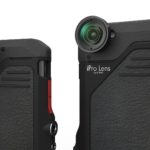
16 Digital Cinema Cameras Tested
Posted on Sep 29, 2015
Digital cinema innovators Radiant Images has completed comparison and evaluation tests on 16 of the most popular digital cinema cameras, updating a similar tool it created for cinematographers two years ago.
By testing and comparing dynamic range, colour rendition and other key areas, Radiant Images enables filmmakers to evaluate and choose cameras and lenses based on visual comparisons rather than technical specifications. A demo reel of the new testing is below.
Radiant Images Camera Evaluation 2015 from Radiant Images on Vimeo.
Radiant performed the new round of tedious, exhaustive tests at Occidental Studios in Los Angeles. Noted cinematographer David Stump, ASC, oversaw the testing while colourist Chris Woods made sure the colour science was accurate.
Digital cameras tested included the new Red Weapon Skin Tone OLFP and Low Light OLFP, Panasonic VariCam 35, Canon C300 Mark II, plus the ARRI Alexa XT, ARRI Amira, ARRI Alexa Mini, Sony Cinealta F55 & F65, Sony FS7, Sony A7S, Sony A7RII, Canon C500, Red Dragon and the Black Magic Ursa.
Testing categories included dynamic range, colour rendition, green screen and an extended low light test.
“How do you tell someone that (colour saturation) is too red with a particular camera?” said Michael Mansouri, VP at Radiant Images. “You can’t, you have to show them. They need to see it. And with these tests, they can. We feel that collaboration starts here in the rental house. We come up with solutions before the start of production. Our camera testing is an important element of that collaboration.”
The colour rendition testing, for example, examines how different cameras process and capture colour and how true those shots were to real life. But instead of looking at colour charts, which often seem unrelated to what is getting shot, Radiant Images uses a range of fabrics in different colors and materials for a more realistic comparison. A range of skin tones are used as well.

Radiant Images also tests and records an exclusive noise profile, or fingerprint, for each digital cinema camera. This effort helps in post production as the noise characteristics unique to each camera can be more easily removed without as much, or any, softening of the image.
Mansouri said post-production houses will utilize the camera testing before and during the production process to avoid delays later on. “They are able to run tests through their post pipeline to make sure everything is working perfectly,” he said.
“Our aim is to help filmmakers achieve their vision without roadblocks and limitations,” Mansouri added. ““With our comprehensive camera tests at their disposal, filmmakers have a powerful, relevant, purposeful tool that permits them to make evaluations in a visual way. It’s very empowering.”













